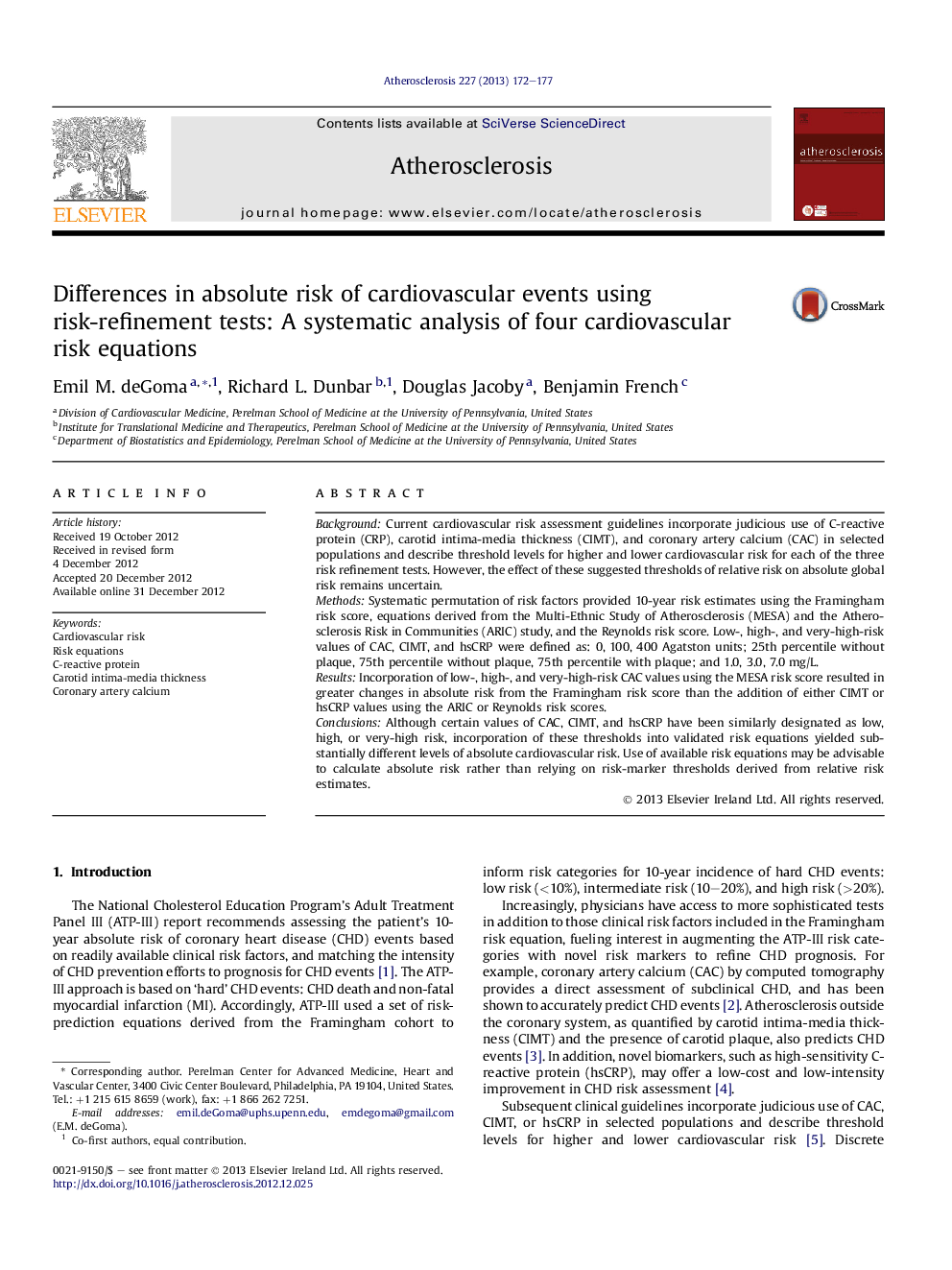| کد مقاله | کد نشریه | سال انتشار | مقاله انگلیسی | نسخه تمام متن |
|---|---|---|---|---|
| 5947166 | 1172365 | 2013 | 6 صفحه PDF | دانلود رایگان |
BackgroundCurrent cardiovascular risk assessment guidelines incorporate judicious use of C-reactive protein (CRP), carotid intima-media thickness (CIMT), and coronary artery calcium (CAC) in selected populations and describe threshold levels for higher and lower cardiovascular risk for each of the three risk refinement tests. However, the effect of these suggested thresholds of relative risk on absolute global risk remains uncertain.MethodsSystematic permutation of risk factors provided 10-year risk estimates using the Framingham risk score, equations derived from the Multi-Ethnic Study of Atherosclerosis (MESA) and the Atherosclerosis Risk in Communities (ARIC) study, and the Reynolds risk score. Low-, high-, and very-high-risk values of CAC, CIMT, and hsCRP were defined as: 0, 100, 400 Agatston units; 25th percentile without plaque, 75th percentile without plaque, 75th percentile with plaque; and 1.0, 3.0, 7.0Â mg/L.ResultsIncorporation of low-, high-, and very-high-risk CAC values using the MESA risk score resulted in greater changes in absolute risk from the Framingham risk score than the addition of either CIMT or hsCRP values using the ARIC or Reynolds risk scores.ConclusionsAlthough certain values of CAC, CIMT, and hsCRP have been similarly designated as low, high, or very-high risk, incorporation of these thresholds into validated risk equations yielded substantially different levels of absolute cardiovascular risk. Use of available risk equations may be advisable to calculate absolute risk rather than relying on risk-marker thresholds derived from relative risk estimates.
⺠Guidelines incorporate judicious use of risk assessment tests in selected patients. ⺠These include: coronary calcium, carotid intima-media thickness, C-reactive protein. ⺠Thresholds for low and high risk have been put forward, based on relative risk. ⺠We calculated differences in absolute risk across these accepted thresholds. ⺠Incorporation of CAC values resulted in the greatest changes in absolute risk.
Journal: Atherosclerosis - Volume 227, Issue 1, March 2013, Pages 172-177
